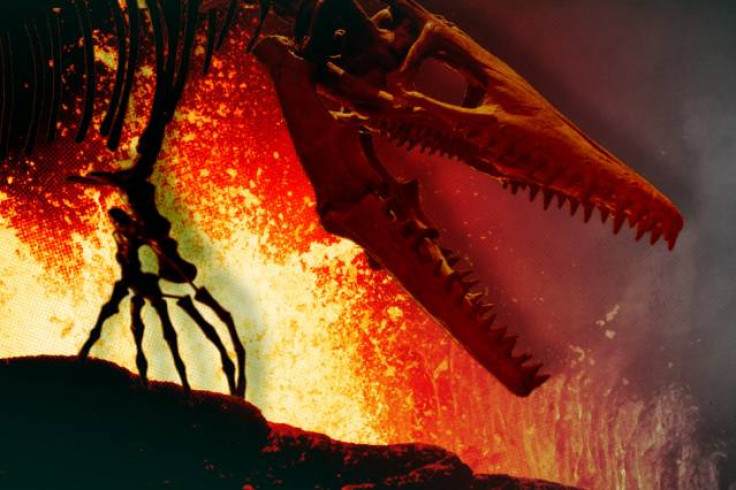Major volcanic eruption before asteroid impact 'may have helped wipe out dinosaurs'

Analysis of rocks from west-central India by MIT scientists suggests that a major volcanic eruption which preceded the asteroid impact 66 million years ago could have aided in the extinction of dinosaurs.
The eruption began 250,000 years before the asteroid strike and continued for 500,000 years after the giant impact, spewing a total of 1.5 million square kilometres of lava.
The volcano would also have spewed dangerous levels of volatile chemicals, poisoning the atmosphere and oceans, says an MIT release.
While it is known that a major eruption occurred in India around the time of the end-Cretaceous extinction, the event had never been precisely dated. The researchers used high-precision geochronology to determine the age of rocks in the Deccan Traps.
The date of the volcanic eruption was inferred from the age of the rocks.
"If models of volatile release are correct, we're talking about something similar to what's happening today: lots of carbon dioxide being emitted into the atmosphere very rapidly," says Michael Eddy, a graduate student in MIT's Department of Earth, Atmospheric and Planetary Sciences (EAPS).
"Ultimately what that can do is lead to ocean acidification, killing a significant portion of plankton — the base of the food chain. If you wipe them out, then you'd have catastrophic effects."
Found in west-central India, these are believed to be remnants of one of the largest volcanic eruptions on Earth.
The researchers looked for volcanic rocks that contain zircon, a uranium-containing mineral that forms in magma shortly after an eruption. It serves as a precise clock for determining the age of rocks.
Most samples from both the bottom and top of the volcanic layer contained zircon.
The ratio of uranium to lead isotopes in the rocks led the team to conclude that the region of the Deccan Traps started erupting 250,000 years before the asteroid strike, continuing for another 500,000 years after the impact.
Whether the magma came in one burst or was spread across several small events will have to be studied next.
The following impact of the asteroid more than five miles wide which smashed into the Earth at 70,000 miles per hour, obliterated most terrestrial life by casting a shroud of dust that blocked sunlight for days together.
Was it the winter that led to their death or the snuffing out of sunlight remains undecided.
Massive volcanic eruptions were believed to be the cause of dinosaur extinction till the discovery of a crater and iridium, a rare element on earth which placed the extinction at the door of some extraterrestrial event.
The work done in collaboration with Princeton University, the University of Lausanne in Switzerland and Amravati University in India has been published in Science.
© Copyright IBTimes 2024. All rights reserved.





